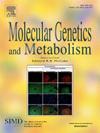Early postnatal hepatocyte transplantation in a child with molybdenum cofactor deficiency type B
IF 3.7
2区 生物学
Q2 ENDOCRINOLOGY & METABOLISM
引用次数: 0
Abstract
Molybdenum cofactor deficiencies (MoCD) are a group of inborn errors of metabolism that result in impaired synthesis of molybdenum cofactor, crucial for the function of three oxidases (sulfite oxidase, xanthine oxidase and aldehyde oxidase). Most patients present with severe neonatal-onset epileptic encephalopathy, hypotonia, poor feeding and apnoea, with death typically occurring within the first three years of life. Whilst there is now an emerging therapy for MoCD Type A (cPMP/fosdenopterin), this treatment is not effective for MoCD Type B and there is no treatment for isolated sulfite oxidase deficiency (ISOD). Liver directed gene delivery is a potential alternative therapy for sulfite intoxication disorders.
We report an attempt to use hepatocyte transplantation as a treatment option for MoCD Type B, in an infant with a strong family history of neonatal-onset disease and early mortality. Six transfusions of hepatocytes were given between Day 1 and Day 18 of life, totalling around 1 × 109 cells with immunosuppressive cover. Concomitantly dietary protein restriction was maintained at 2 g/kg, including 0.7 g/kg of methionine- and cyst(e)ine-free amino acid mixture. The aim was to utilize hepatocyte transplantation as a bridge to liver transplantation.
Whilst there was evidence of biochemical stabilization with reduction in concentrations of sulfite and S-sulfocysteine and a moderate increase in urate levels compared to the sibling, the treatment was not able to prevent acute brain injury from sulfite toxicity which was evident in neuroimaging at 35 h of age. This correlated clinically with ongoing seizures as well as minimal developmental progress.
求助全文
约1分钟内获得全文
求助全文
来源期刊

Molecular genetics and metabolism
生物-生化与分子生物学
CiteScore
5.90
自引率
7.90%
发文量
621
审稿时长
34 days
期刊介绍:
Molecular Genetics and Metabolism contributes to the understanding of the metabolic and molecular basis of disease. This peer reviewed journal publishes articles describing investigations that use the tools of biochemical genetics and molecular genetics for studies of normal and disease states in humans and animal models.
 求助内容:
求助内容: 应助结果提醒方式:
应助结果提醒方式:


